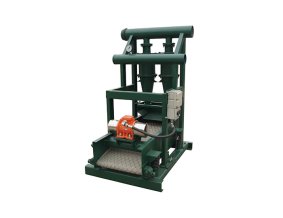Sludge Separation Equipment Innovations and Importance
In the realm of waste management and environmental protection, sludge separation equipment plays a crucial role in enhancing the efficiency and effectiveness of treating wastewater. This equipment is essential for industries such as municipal wastewater treatment plants, food and beverage sectors, pharmaceuticals, and more. By effectively separating solids from liquids, sludge separation equipment helps in minimizing environmental impact and recovering valuable resources from waste.
Sludge is a byproduct generated during the treatment of wastewater. It consists of organic and inorganic solids that must be managed properly to prevent pollution and protect public health. The process of separating sludge from wastewater involves several methods, including gravity thickening, centrifugation, and membrane filtration. Each of these methods comes with its unique advantages and is suitable for different types of applications.
One of the most common methods of sludge separation is gravity thickening. In this process, the sludge is allowed to settle under the influence of gravity, causing denser solids to sink to the bottom while the clearer liquid can be decanted off the top. This method is often used as a preliminary step before mechanical dewatering processes, making it an economical choice for treating large volumes of wastewater.
Centrifugation, on the other hand, utilizes the principle of centrifugal force to separate solids from liquids. The sludge is fed into a rotating drum, where the high speeds generate forces that cause the solids to migrate to the periphery of the drum. This method is particularly effective for reducing the moisture content of sludge, making it a popular choice in industries that require high efficiency in solid-liquid separation.
sludge separation equipment
Membrane filtration is another advanced method employed in sludge separation. This technique incorporates semi-permeable membranes that allow only certain size particles to pass through, effectively filtering out solids from liquids. Membrane filtration offers high-quality effluent and has gained popularity due to its ability to meet stringent environmental regulations. However, it is important to note that membrane systems often require more maintenance and operational expertise compared to other methods.
The importance of sludge separation equipment extends beyond just waste management. By optimizing the separation process, industries can recover valuable resources, such as biogas and nutrients, from sludge. The recovered biogas can be utilized as a renewable energy source, while nutrients like nitrogen and phosphorus can be recycled to produce fertilizers. This not only promotes sustainability but also contributes to the circular economy.
Moreover, with increasing environmental regulations and a growing awareness of sustainability, the demand for innovative sludge separation solutions continues to rise. Manufacturers are responding with advancements in technology, such as automated control systems, energy-efficient designs, and enhanced materials that improve the performance and longevity of separation equipment.
Additionally, the integration of IoT (Internet of Things) technology allows for real-time monitoring and optimization of the sludge separation process, leading to reduced operational costs and improved compliance with regulatory standards.
In conclusion, sludge separation equipment is critical for effective wastewater management and environmental protection. As industries continue to evolve and face new challenges, the development of innovative separation technologies will play a pivotal role in enhancing the sustainability of waste treatment processes. By efficiently managing sludge, we can not only protect our environment but also reclaim valuable resources, contributing to a greener future.
 Linear Motion Shale Shaker In Drilling Rig
Linear Motion Shale Shaker In Drilling Rig  Oilfield Mud Cleaner
Oilfield Mud Cleaner  Drilling Fluid Decanter Centrifuge
Drilling Fluid Decanter Centrifuge  Drilling Mud Desander
Drilling Mud Desander  Hydrocyclone Desilter
Hydrocyclone Desilter  Centrifugal Pump/Centrifugal Mud Pump
Centrifugal Pump/Centrifugal Mud Pump  Shear Pump
Shear Pump  Jet Mud Mixer
Jet Mud Mixer  Horizontal Mud Agitator
Horizontal Mud Agitator  Constant Pressure Drilling Fluid Mud Gas Separator
Constant Pressure Drilling Fluid Mud Gas Separator  Mud Gun
Mud Gun  Mud Tank
Mud Tank  Solids Control System Vacuum Degasser
Solids Control System Vacuum Degasser  Flare Ignition Device
Flare Ignition Device  Diesel Tank
Diesel Tank  Submersible Slurry Pump
Submersible Slurry Pump 





































